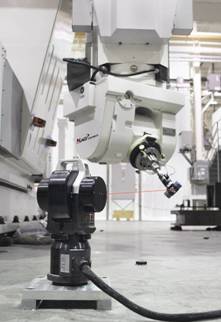A joint project of NCMS called Volumetric Accuracy for Large Machine Tools (VALMT), partnering Automated Precision, Boeing, Siemens and Mag Cincinnati, has pioneered an innovative process and established new methodology in volumetric error compensation for large machine tools. Volumetric error compensation or VEC, is a true volumetric calibration that improves close tolerance and working accuracy of complex five- and six-axis machine tools throughout their entire working envelope.
|
ADVERTISEMENT |
Introduction
 Day after day it’s the same problem for machine tool owners. They spend well into six figures for a high-precision machine tool and they have a great deal of difficulty determining why it’s not cutting parts accurately. The typical culprits are usually the same: ball screw or rack-and-pinion errors due to wear, machine-build tolerances, metal fatigue, maybe even foundation problems like sag all. All of these contribute to the inaccuracies they face.
Day after day it’s the same problem for machine tool owners. They spend well into six figures for a high-precision machine tool and they have a great deal of difficulty determining why it’s not cutting parts accurately. The typical culprits are usually the same: ball screw or rack-and-pinion errors due to wear, machine-build tolerances, metal fatigue, maybe even foundation problems like sag all. All of these contribute to the inaccuracies they face.
…
Add new comment